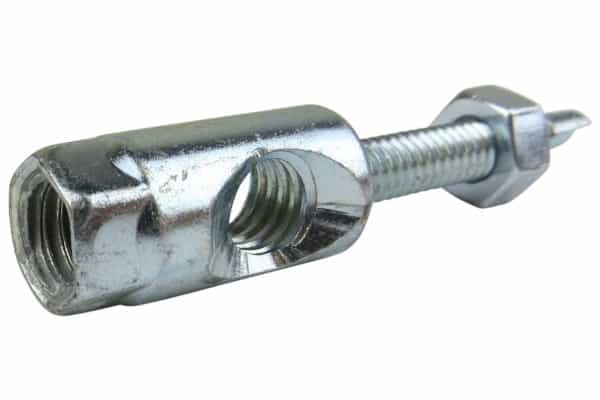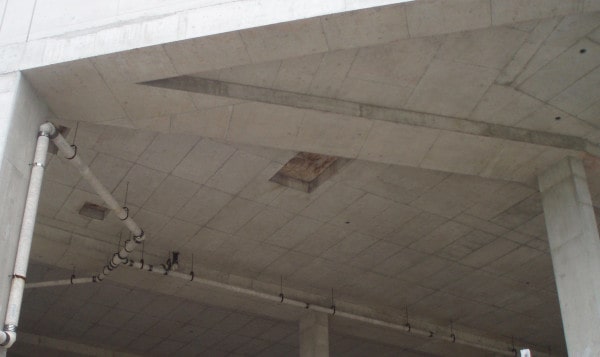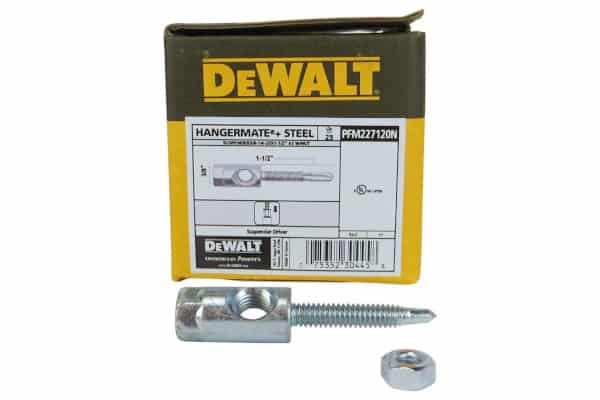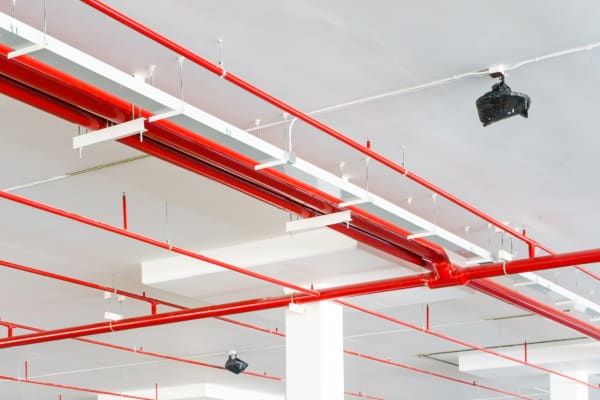Threaded rod fasteners approved for fire sprinkler system piping can expedite installation and withstand impressive forces
Fire sprinkler systems use pipe—and often, a lot of it—to get water to sprinkler heads. A wide range of devices helps to ensure that these pipes hang securely even when filled with thousands of pounds of water. But threaded rod hangers, or fasteners, have helped simplify a tedious process for fire sprinkler contractors, reducing the effort and time required for installation.
In this article, we’ll dive further into the world of fasteners. We’ll get a better understanding of what they are and how to use them, what’s needed in fire sprinkler systems, and look at what the market has to offer.
If you already know what you need, click here to browse our selection of threaded rod fasteners and manufacturer-approved sockets.
Fasteners connect to a variety of materials to hold heavy loads securely
Hanging fire sprinkler pipe requires load-bearing hangers and a structural member—a part of the building—capable of holding those loads. In the sprinkler fitting industry, it’s customary practice to create a pipe hanger assembly. These assemblies connect to a ceiling flange, clamp, or other parts to support the pipe’s weight.
Fasteners can expedite pipe hanging by eliminating the need for components often used in pipe hanger assembly. A fastener and a threaded rod hanger are essentially the same—an anchor with a rod coupler in a one-piece design. Each is available in different shapes and sizes, and each is designed for use in different mediums.

These devices go by many names: threaded rod anchor, threaded rod fastener, rod hanger, rod hanging anchor, threaded anchor bolt, foundation bolt, or even a brand name like HangerMate® or Sammys® Screws. For simplicity, we’ll mostly refer to them as fasteners.
The installation of these fasteners is simple. They don’t generally require the use of a secondary setting, like a ceiling flange, site beam attachment, or clamp. But they do require the use of a screwdriver or drill with an attached nut driver. Because the ends are threaded, they can be used with a nut and washer to add support for the external load.
Fire code and laboratory listings govern the use of fasteners in sprinkler systems
In many jurisdictions, the installation of fire sprinkler systems is governed by the standards of the National Fire Protection Association (NFPA). But because these types of fasteners are a mixture of bolt, screw, anchor, and flange, there isn’t a set of NFPA-specific code directly pertaining directly to their usage. That doesn’t mean they don’t need to be compliant. Instead, they should follow the broader set of guidelines presented within the NFPA’s various standards for sprinkler system installation and the manufacturer’s manual.
These standards refer to fasteners in the traditional sense. They discuss the use of powder-driven studs, bolt or rod size, and drive screws based on the medium. For the most part, it designates their individual listing as the guide to follow. Listing, hanging, and bracing components are UL listed under two standards:
- UL 203, Pipe Hanger Equipment for Fire Protection Service for Fire Protection System Supports
- UL 203A Sway Brace Devices for Sprinkler System Piping for Seismic Applications
These standards govern the materials making up pipe hangers. Strength, corrosion-resistance, and other factors are considered. The result is a listing that limits the maximum load and the choice of medium for each fastener type, ensuring that these devices support pipe safely.
Basic considerations for fasteners include the base material, ambient heat, and other factors specified by the manufacturer
There are three types of standard fasteners—concrete fasteners, steel fasteners, and wood fasteners. Each type of fastener is made specifically for use with its corresponding medium.
Many manufacturers include installation guidelines and procedures for fasteners. When followed accurately, these instructions allow installers to achieve the best results possible. Each manufacturer tests products in various scenarios to ensure their performance in a variety of applications.
The base material can have a sizable impact on the performance of the fastener. Fasteners installed into a dense medium such as concrete have the ability to withstand greater load pressures than those installed in lighter mediums, such as wood. But the quality of that material matters, too. For example, cedar, pine, redwood, and other wood types each have vastly different performance characteristics.

Once you understand the material you’re working with, consider the load that the fastener itself will bear and the fastener’s material. Ensure that the fastener is listed and suitable for the load. Those used for fire sprinkler systems must meet more requirement than other fasteners. Critically, each fastener should be able to withstand high levels of heat; those designed for fire service should undergo fire rating tests and be listed accordingly.
Why choose HangerMate fasteners?
DeWALT’s line of HangerMate fasteners is approved for overhead use with fire sprinkler pipes. Based on their type, orientation, and the base material, some of these small fasteners can support ultimate tensile loads up to 5,810 pounds. HangerMate dual-directional fasteners even allow installers to hang pipe both vertically and horizontally.
Each fastener type is specially designed for use in concrete, steel, or wood. All three specifications come in vertical, horizontal, and dual-directional configurations. And each can be used with a specified DeWalt screwdriver kit, drill/driver kit, or hammer drill kit.

At QRFS we have a wide selection of threaded rod fasteners, including all the options mentioned above. By purchasing from us, you not only receive quality products (within 2-3 business days generally), but you also benefit from our quality customer service and extensive product knowledge.
Click here to browse our selection of pipe hangers and manufacturer-approved sockets.
Have a question about threaded rod fasteners for fire sprinkler systems? Call us at +1 (888) 361-6662 or email support@qrfs.com.
This blog was originally posted by Jason Hugo and Anna Hartenbach at blog.qrfs.com on September 7, 2017. If you found this helped you work smarter instead of harder, check us out at Facebook.com/QuickResponseFireSupply or on Twitter @QuickResponseFS.


